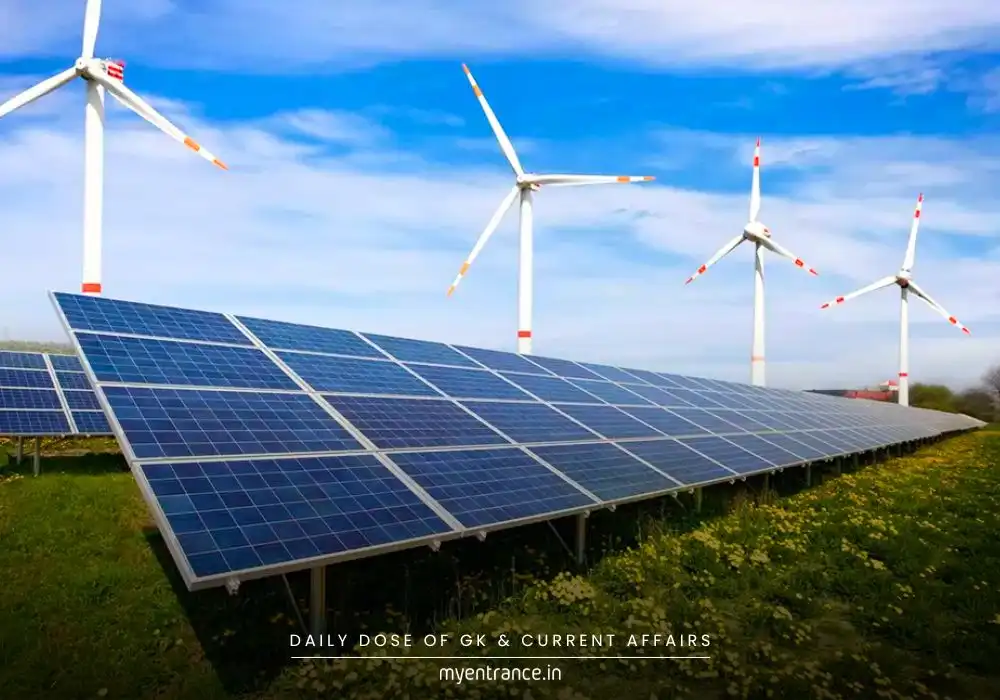Translate Language
India Achieve 50% Clean Energy Capacity: Government Schemes, Future Goals
India has crossed a major climate milestone—half of its installed power capacity now comes from clean energy sources, beating its 2030 target by five years. This rapid shift is driven by strong policy support, private sector innovation, and massive solar and wind energy expansions.

How Did India Achieve This Remarkable Feat?
India’s clean energy surge didn’t happen overnight. It’s the result of strategic planning, policy incentives, and aggressive execution by both the government and private players. Here’s how the country made it happen:
1. Policy Push & Incentives
Solar Power Boom: From just 2.82 GW in 2014, India’s solar capacity skyrocketed to 116 GW by June 2025—a 41x growth in just over a decade.
Wind Energy Growth: Wind power capacity more than doubled, from 21 GW to 51.6 GW in the same period.
Key Government Schemes: Initiatives like the Production-Linked Incentive (PLI), National Wind-Solar Hybrid Policy, and ALMM updates boosted domestic manufacturing and streamlined project approvals.
2. Private Sector Leadership
Adani Green Energy (AGEL) leads India’s renewable sector with 15,815.5 MW operational capacity—contributing 8.66% of India’s total renewable energy.
AGEL’s Khavda Project (Gujarat): A 30 GW renewable energy park—five times the size of Paris—is set to become the world’s largest clean energy site.
Energy Storage Expansion: AGEL is investing heavily in pumped hydro storage (500 MW Chitravathi project) and battery storage to stabilize grid supply.
3. Rising Demand & Future Goals
Peak power demand is expected to jump from 250 GW (2024-25) to 388 GW by 2032, driven by urbanization and digital growth.
India’s 500 GW non-fossil target by 2030 now looks achievable, with storage and AI-driven grid management being the next focus areas.
Sample Exam Questions & Answers
Q1: What percentage of India’s power capacity now comes from non-fossil sources?
A: 50%, achieved five years ahead of the 2030 target.
Q2: Which company is India’s largest renewable energy developer by operational capacity?
A: Adani Green Energy Ltd (AGEL), with over 15,815.5 MW.
Q3: What is the name of AGEL’s 30 GW renewable energy project in Gujarat?
A: The Khavda Renewable Energy Park.
Q4: How much has India’s solar power capacity grown since 2014?
A: From 2.82 GW to 116 GW—a 41-fold increase.
Q5: What are India’s next challenges in renewable energy expansion?
A: Scaling energy storage, upgrading grids, and integrating AI for demand management.
Why Is This Important for Competitive Exams?
UPSC/SSC/PSC: Questions on India’s renewable energy progress, policies, and key projects are common in GS (Environment & Economy).
NID/NIFT/KAS: Sustainability and innovation in energy are trending topics in essay and interview rounds.
Current Affairs: This milestone reflects India’s climate commitments under the Paris Agreement, making it crucial for prelims and mains.
Get 3 Months Free Access for SSC, PSC, NIFT & NID
Boost your exam prep!
Use offer code WELCOME28 to get 3 months free subscription. Start preparing today!















